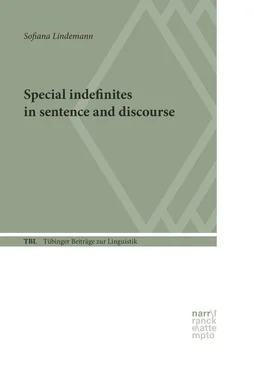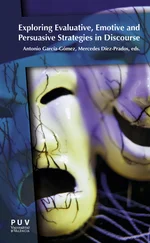Centering Theory has been widely adopted in the fields of computational linguistics and psycholinguistics; however, various aspects still need to be integrated in the existing framework. One challenge for Centering Theory is to model the referential management within longer discourse segments, departing from local, sentence-to-sentence relations. Furthermore, Centering Theory could be extended to include a discussion about lower-situated entities on the Cf-list, which make good candidates for Cbs two or three sentences after being introduced in the discourse. Table 2.3 presents an example taken from the multi-sentence-continuation study on pe -marking in Romanian (see Chapter 5), which highlights important aspects, which cannot be accounted for by the current version of Centering Theory. Several observations can be made on the basis of the discourse segment presented in Table 2.3. In the first utterance (U 1) a referent is introduced in subject position, which becomes the Cb in the next sentence (U 2). As predicted by Centering Theory, the Cb is realized by means of a reduced type or referring expression in U 2. As Romanian is a pro-drop language, the re-mentioned Cb in subject position is realized by the least explicit type of referring expression in that language, a null pronoun. In U 2, a second referent (i.e. ‘PE a boy’) is introduced in a non-prominent position (i.e. as an indefinite noun phrase realized as a direct object, which is preceded by the optionally occurring differential object marker pe ) and this referent becomes the second-ranked referent on the Cf list in U 2. The story continues with the already established Cb, Graur , mentioned in subject position in U 3and ranked highest on the Cf list of U 3. Additionally, a new referent is added in U 3(i.e. ‘PE a lady’) as the second-ranked referent, which was introduced as a pe -marked definite noun phrase in direct object position. The interesting observation is that the lower-ranked Cf pe a boy becomes the Cb in U 4and is picked up by means of a null pronoun in the same sentence. The shift of the Cb between U 3and U 4is formally indicated by the proximal demonstrative this ('acest'). The third referent, which was initially introduced by a pe -marked definite noun phrase in direct object position, becomes the Cb in U 8.
| Utterances |
Cb |
Cf list with preferred center |
Sentence Transitions |
| U 1U 2 |
Graur s-a hotărât să meargă în oraş. ‘ Graurdecided to go downtown.’ |
n.a. |
[Graur] |
n.a. |
| Pe drum l-a văzut pe un băiatintrând într-un magazin. ‘On the way, he saw pe a boyentering a store.’ |
[Graur] |
[Graur, boy] |
(CONTINUE) |
| U 3 |
Graur o recunoscu imediat pe doamnade lânga acest băiat suspect. ‘Graur immediately recognized the ladynext to this suspect boy.’ |
[Graur] |
[Graur, lady, boy] |
CONTINUE |
| U 4 |
Purta o şapca Hello Kitty, ‘He was wearing a Hello Kitty cap’ |
[boy] |
[boy] |
SMOOTH SHIFT |
| U 5 |
iar în mâna dreapta avea o geantă diplomat. ‘and in his right hand he had a suitcase.’ |
[boy] |
[boy] |
CONTINUE |
| U 6 |
Tiptil, tiptil, s-a furişat dupa băiat în magazin. ‘Slowly, slowly, he followed the boy into the store.’ |
[Graur] |
[ Graur, boy] |
SMOOTH SHIFT |
| U 7 |
Graur se temea să nu fie observant de cineva. ‘Graur feared someone could see him.’ |
[Graur] |
[Graur] |
CONTINUE |
| U 8 |
Femeia presimți ceva. ‘The woman suspected something.’ |
[lady] |
[lady] |
SMOOTH SHIFT |
Table 2.3:
Sample continuation story from the experimental study on pe -marking in Romanian (Chapter 5)
The main observation from this example is that particular referents seem to have the potential to shift the topic with a certain delay. The relations and restrictions between utterances of a discourse segment are analysed in Centering Theory in a linear way, such that each utterance necessarily connects with the one immediately preceding it, although in a given context, the discourse relations are not always between adjacent utterances. As it will become more evident in the discussions from Chapters 3-5, certain referents are more prone to shift the topic (i.e. become Cbs in Centering Theory terms) two or three sentences after being introduced in the discourse. The example in Table 2.3 argues in favour of an adjustment of the ranking criteria of the Cfs in such a way as to encompass referents that have the potential to become Cbs as the discourse progresses. Several other studies showed that under certain conditions, other referents might outrank subjects in salience or accessibility. Smyth and Chambers (1996), for example, found out that repeated-name penalties arise for subject and object referents alike. Moreover, they showed that reading times for pronoun referents are faster when they refer back to a parallel object referent than to a non-parallel subject or indirect object referent. Thus, besides the grammatical roles of the referent, syntactic parallelism between Cp and Cb seems to play a role as well (Smyth 1994). In Section 2.3.3 we discuss other factors that impact the ranking of referents on the Cf list.
The review presented so far focused on approaches to language processing concerned with the online-tracking of referents. This includes questions about what referents of a sentence speakers (re-)use in the subsequent discourse and what type of referring expression they choose for this referent. The majority of studies presented so far have adopted a backward-looking perspective, focusing on the relation between an anaphoric expression and its antecedent and the different factors that determine the use of a particular anaphoric expression at a particular point in the discourse (Givón 1983, Gernsbacher 1989, Arnold 1998, Ariel 2001, Chiriacescu 2011a, Kehler et al., 2008 Kaiser 2011). It is generally assumed that each anaphoric expression is linked to one referent in the immediately preceding discourse that is selected from a list of discourse referents that are ranked with respect to their accessibility. The general assumption is that there is an inverse relation between the explicitness (in terms of descriptive, lexical, and phonological material) of the anaphoric expression and the accessibility of its antecedent expression. In other words, a less explicit type of referring expression of the anaphor often correlates with an accessible referent; the opposite holds for more explicit types of referring expressions (e.g. definite noun phrases), which correspond to less-accessible referents. In English, pronouns have been associated with highly accessible referents and most studies to date have investigated the factors that correspond to such referents. By adopting a backward-looking perspective, most studies have investigated the characteristics of the anaphor that license the use of a pronoun in discourse. Most investigations are moreover local, as the accessibility of a referent was mainly computed between two adjacent sentences. In what follows, I will briefly discuss some of the more important factors that have been shown to contribute to the accessibility of referents in terms of subsequent pronominalization and next mention.
2.3.3 The accessibility of referents
Previous research points to the role different factors play in guiding language users’ expectations about upcoming content. For example, coreference processing is shown to vary with different cues that hold between sentences. The purpose of this Section is to review some of the major cues that have been shown to elicit expectations about the accessibility of a referent in terms of likelihood of pronominalization, namely: recency, givenness, syntactic prominence, semantic prominence, implicit causality and coherence relations. Each of these cues or factors have been investigated in terms of the predictions they yield at local level, between adjacent sentences, with respect to the likelihood of pronominalization and next mention of a referent.
Читать дальше












